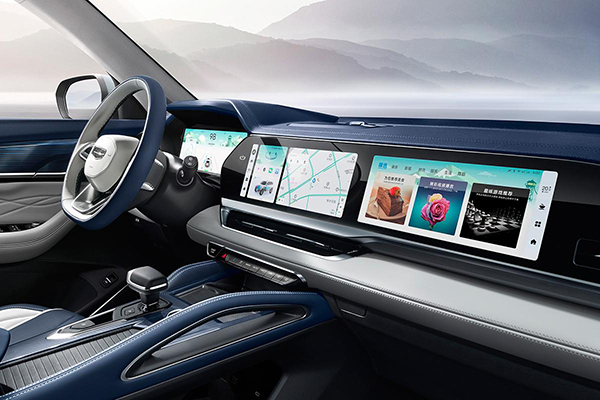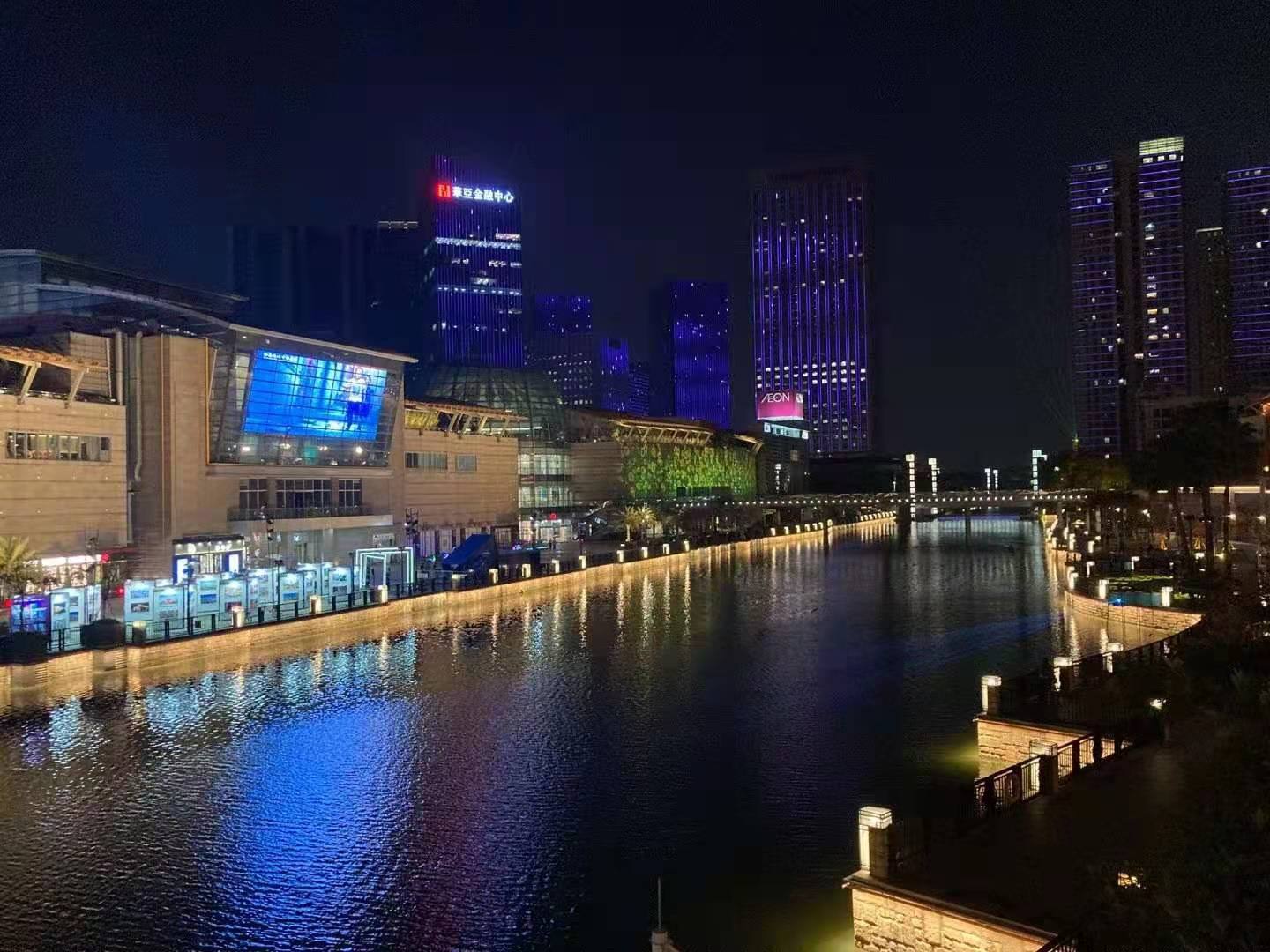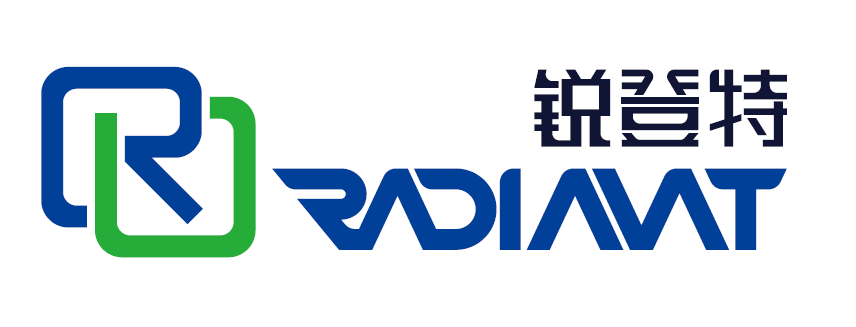Intelligence has become the focus of the next stage of transformation of the automobile. Among them, as an important carrier for the realization of automobile intelligent functions, on-board screens are becoming larger and more numerous. In smart cars, screens are being combined with audio, light strips, microphones, sensors and other hardware to achieve richer functions and create a more technologically intelligent driving experience.
In the initial stage of the car screen, the screen only needs to satisfy functions such as navigation and listening to music. With the advantages of mature technology, low cost and long lifespan, LCD has become the most mainstream technology in the car screen market. With the development of automobile intelligence, the shortcomings of LCD technology itself (low contrast, low brightness, and poor display effect in the car) have become short boards, which are pain points that major car companies need to solve. As a result, higher-contrast, thinner and lighter OLED technology began to board cars.
Samsung currently announced that it will provide OLED displays for BMW in 2024, with an expected shipment of up to 4 million units. This includes BMW's full range of HUDs and BMW's flagship electric sedan i7. Already in the 2022 Mercedes-Benz EQS, LG's advanced in-vehicle infotainment (IVI) system features three displays. Using P-OLED display technology. In addition, high-end models such as the Audi e-tron, Weilai ET7, and Cadillac Escalade are all equipped with OLED screens.

However, the brightness of OLED is not enough, so Mini LED has become another option for high-end cars.
The traditional LCD backlight is further upgraded, and Mini LED is used as the backlight, and LCD technology has achieved a revolutionary breakthrough. At present, terminal products using Mini LED backlight emerge in an endless stream, ranging from small flat panels, monitors, to large TVs, all of which have a place for Mini LED backlight technology. In the automotive field, Mini LED backlights are "going in both directions" with cars, relying on the display quality and longer lifespan that are not inferior to OLEDs.
On the other hand, Mini LED direct display technology has also been applied in automobiles. For example, the Great Wall Mecha Dragon is equipped with a smart taillight with Mini LED display technology at the rear of the body, which is composed of tens of thousands of LEDs, and the display pattern can be customized.
Before 2022, although Mini LED screens in vehicles are frequently seen in newspapers, there are very few practical applications. Since 2022, mass-produced cars equipped with Mini LED screens have come and gone. As a new generation of display technology, Mini LED is becoming the "leader" in the automotive display field with its advantages of long life, high brightness, high contrast, wide color gamut, and high color saturation. World-renowned car companies including Mercedes-Benz and BMW have adopted the large-size, high-resolution and multi-local dimming Mini LED screens as the highlights of their cars, reflecting the luxury and intelligence of a car. The application of this technology is naturally inseparable from the collective role of the industrial chain.

On the one hand, based on their own technology, the company has been constantly working on the Mini LED car screen, and the success reports are frequent. In terms of automotive certification, in addition to BOE, Longli Technology, Jufei Optoelectronics, Innolux, and Macroblock mentioned above, the Mini LED backlight products of Haiwei Technology, Refond Optoelectronics, Jinko Electronics, and Huayinxin have also been approved. Passed the vehicle level certification. In terms of products, NationStar's component business department is focusing on the development of Mini POB's Mini LED backlit vehicle central control panel. According to the customized needs of customers, Nationstar Optoelectronics can provide a variety of driving solutions.
On the other hand, due to the high difficulty of in-vehicle screen technology, industry chain companies are also working together to overcome industrial difficulties through win-win cooperation. BOE and Jiangqi Group have been cooperating since 2013, and have maintained close exchanges on new technologies such as Mini LED and OLED on different models such as passenger cars and commercial vehicles. On August 16, the two parties signed a cooperation agreement based on a solid foundation of cooperation, and carried out extensive cooperation in the fields of design and development, manufacturing and processing of vehicle display screens and solutions, as well as mass production and application of smart windows, to jointly explore the new ecology of smart travel and build End-user immersive intelligent driving experience.
Huaan Xinchuang, a comprehensive service provider of automotive cockpit electronics, announced on August 13 that it intends to jointly invest in the establishment of a joint venture company Jiangsu Tianhua Automotive Electronics Technology Co., Ltd. with Shenzhen Tianma. The research and development, testing, independent or commissioned production, and sales teams directly deliver smart cockpit related products and services to downstream car factory customers.
It is worth mentioning that the certification cycle of automotive products is relatively long. Therefore, although Mini LED automotive screens have seen signs of transition from the R&D testing stage to the quasi-mass production stage, most Mini LED manufacturers are still in the product promotion or verification stage. It will take at least 2023 for Mini LED car screens to usher in a real volume.At present, the assembly rate of multi-screen in car companies has increased significantly. Although car companies have linked screens with in-car entertainment to publicize the benefits of multi-screen cars to consumers, there are still strong opposition to this trend. Over a wave.
In the era of multi-screen smart cars, physical function buttons are integrated into the screen, and in order to integrate more functions on the screen, there are more and more sub-menus. In the end, even things like adjusting the volume require multiple clicks. to complete. Of course, smart cars have voice interaction functions, and consumers can also yell at the cold machine: turn down the volume, lower the volume, and need an even lower volume—a function that could be achieved with a hand in the past, but now it has become complicated , the patience of consumers is being tested.
Give the car some time! In the future, cars will strike a balance between intelligence and safety, technology and cost, and various "black technologies" that were originally only equipped in high-end models will also be gradually applied to economic models. At that time, Mini LED car screens will also step up. Into more families, giving cars more humanized light.

Post time: Dec-21-2023
